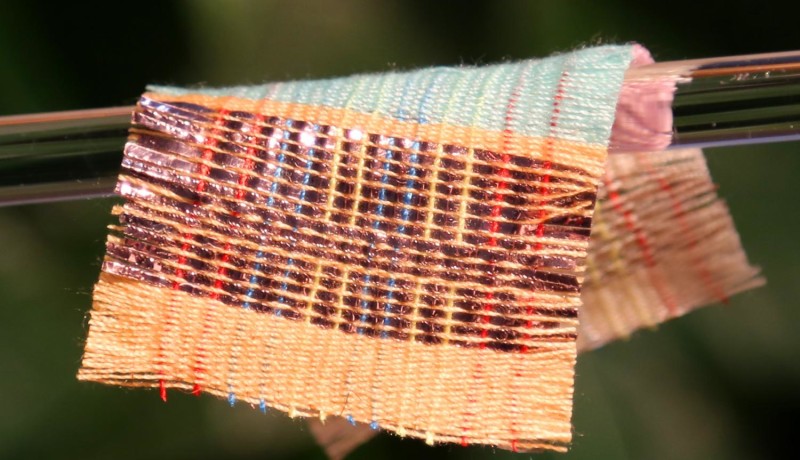Sun and (wind) motion generate electricity in fabric
September 20, 2016
on
on

It’s great to see that solar and wind power can generate megawatts of electricity for households and the industry, but that’s little comfort if you need a few milliwatts to charge your phone on a windswept hill or in a sundrenched place but miles and miles from a power connection.
Good news: researchers at Georgia Institute of Technology have developed a fabric capable of harvesting energy from both sunshine and motion, and simultaneously. The research was reported September 12 in Nature Energy.
Remarkably, a commercial textile machine was used to weave together solar cells constructed from lightweight polymer fibers with fiber-based triboelectric nanogenerators. These use a combination of the triboelectric effect and electrostatic induction to generate small amount of electrical power from mechanical motion such as rotation, sliding or vibration. The new fabric, which is 320 micrometers thick woven together with strands of wool, could be integrated into tents, curtains or wearable garments.
The researchers measured the output from a 4 x 5 centimeter piece of fabric, which charged up a 2-mF commercial capacitor to 2 volts in one minute under sunlight and movement. Another success was an A4 sized flag made from the fabric, on a rod and held out of a rolled down car window on a cloudy day — whilst moving of course.
Good news: researchers at Georgia Institute of Technology have developed a fabric capable of harvesting energy from both sunshine and motion, and simultaneously. The research was reported September 12 in Nature Energy.
Remarkably, a commercial textile machine was used to weave together solar cells constructed from lightweight polymer fibers with fiber-based triboelectric nanogenerators. These use a combination of the triboelectric effect and electrostatic induction to generate small amount of electrical power from mechanical motion such as rotation, sliding or vibration. The new fabric, which is 320 micrometers thick woven together with strands of wool, could be integrated into tents, curtains or wearable garments.
The researchers measured the output from a 4 x 5 centimeter piece of fabric, which charged up a 2-mF commercial capacitor to 2 volts in one minute under sunlight and movement. Another success was an A4 sized flag made from the fabric, on a rod and held out of a rolled down car window on a cloudy day — whilst moving of course.
Read full article
Hide full article


Discussion (0 comments)